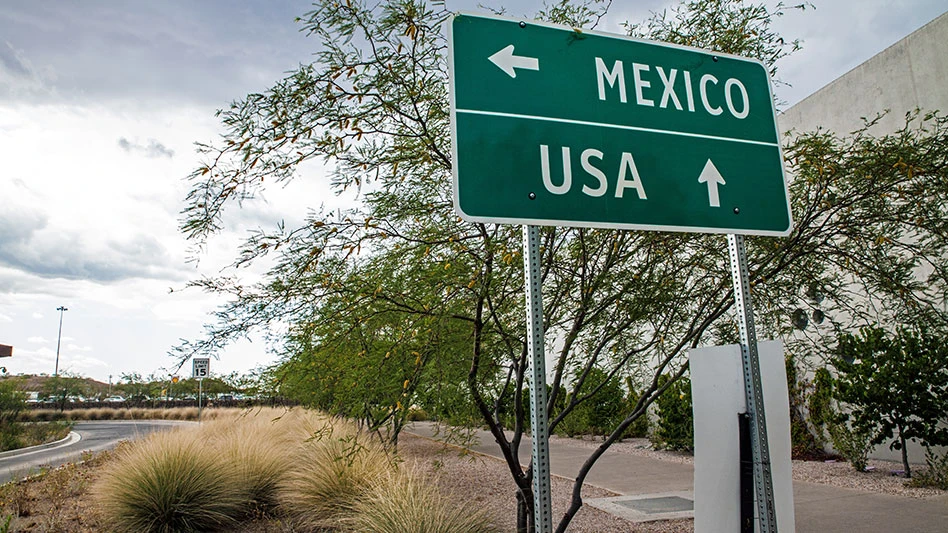If you know little, stick to what is surest in each profession. People may not consider you ingenious, but they will think you solid," wrote the 16th century Jesuit priest Baltasar Gracián.
For obvious reasons we are living in a business era where our markets are borderless and knowledge about opportunities must be accessed culturally, politically, economically and geographically.
Just as Mexico has been sacked, robbed and exploited by foreign invaders throughout its history, the Chinese have as well. Both countries’ histories have had great times of prosperity followed by long periods of political and economic upheavals. Now, Mexico’s biggest challenge is coming from China’s low manufacturing labor cost, which has already lured some companies from Mexico to China.
The following article is based on recent visits to Mexico and China. I had the opportunity to visit manufacturing facilities in both countries and, with the following analysis, I have attempted to provide the reader with a broader view of two of the most important trading partners the United States has ever had.
EMERGING ECONOMY. China is clearly the major emerging power of the 21st century. By contrast, Mexico has become integrated into the economic force that is the North American Free Trade Agreement (NAFTA) that it is now part of the largest trading block in the world.
China has been accused of keeping its currency artificially low, avoiding the open floating economic mechanism. Americans now believe China’s low labor cost, government-manipulated currency and poor environmental enforcements (16 of the world’s most polluted cities are in China) are an unfair advantage over market-driven economics, keeping the prices of Chinese goods and services sold in the United States much lower, making it harder for American companies to compete.
Mexico experienced similar circumstances more than two decades ago when lower labor cost, cheap currency and proximity to the U.S. market drove companies to build manufacturing plants in Mexico.
Now, global producers and retailers such as Wal-Mart have made trade between the United States and China grow 30-fold in the last decade. Companies have shifted production from Mexico and other nations to China. Furthermore, China has become the world’s top destination for foreign investment. Last year, nearly $61 billion in direct investment went to China vs. $12 billion to Mexico. To calm Western currency concerns, the Chinese government recently announced it would allow the yuan’s value to fluctuate slightly, putting aside its decade-long policy of pegging it at approximately 8.3 to a dollar.
TRADE CURRENTS. In 1990, China was the 15th largest trading nation in the world. By 2003 it was the fourth. Now, the lower manufacturing labor costs and a well-developed supplier base for most producers of goods fuels China’s competitive advantage over Mexico in several sectors.
At the same time, foreign companies invest in China hoping to sell their products domestically as consumer purchasing power increases. The labor costs at Chinese factories average $1 for every $3.5 dollars paid in Mexico. However, according to a foreign-based electronics company operating in Mexico, labor costs represent a smaller percentage of the total cost of production for certain electronic equipment, easing the pressure on manufacturers of equipment to shift production from Mexico to China.
Companies such as IBM, HP, Sanmina-SCI and Eaton, among others, make equipment for markets throughout North and South America in Mexico but have plants in China, as well. Such companies had focused their manufacturing in Mexico based on the total cost of production.
Currently, Mexico buys more goods and services from the United States than China does. The U.S.-Mexico trade gap is significantly lower than the China-U.S. trade gap. China’s share of U.S. imports has grown steadily and now exceeds Mexico’s. According to one Mexican report, China’s gains are being made at Mexico’s expense.
China’s exports (22.8 percent of which head to the United States) constitute 40 percent of its gross domestic product vs. approximately 30 percent in Mexico, suggesting the great importance exports play in the overall Chinese economy as well as how much exposure it has to external forces. Most of China’s economic growth is thanks to its exports to the United States.
Last year, China exported $162 billion worth of goods to the U.S., representing approximately 25 percent of the U.S. trade deficit. According to analysts, $2.20 out of $10 that the Chinese economy produces in goods and services is U.S.-bound. During the first six months of 2005, exports have grown by 32.7 percent from a year ago, adding political pressure in Washington to act.
PARTY PLANNING. For most of the 20th century, Mexico’s economy and politics were ruled by a one-party system, the PRI, and the Mexican government owned the banks, utilities and many major industries.
Now, Mexico has a free-market economy that recently entered the trillion-dollar class, and more than 90 percent of state-owned firms has been privatized. Thus, with the implementation of NAFTA in the mid-1990s, trade with the United States and Canada has tripled.
Nevertheless, the Mexican government continues to be criticized by financial institutions for its lack of energy, as well as for its need for further fiscal and judicial reforms.
The Chinese economic system operates within a political framework of strong communist control. According to the Xinhua News Agency, a recent survey indicates that 33.9 percent of China’s private entrepreneurs are members of the communist party of China (CPC). The rate is even higher among those in charge of larger companies. As Mexico did, is China finding it difficult to reduce corruption and to alter its political and business culture, which was in place for most of the 20th Century?
The answer is: yes. The government is responding, but it has a fairly enormous task on its hands. Many business owners joined the CPC before they started their businesses, the report says. The figure shows a change, which is encouraging. Yet, it also arouses suspicion. Many party members have taken the lead in the new business opportunities and have enriched themselves. They only account for 5 percent of China’s population, yet they comprise more than one-third of the entrepreneurs in the country.
According to a CIA intelligence report, the current Chinese political-economic scenario is often defined as a hybrid system, offering the worst attributes of socialism (bureaucracy and lassitude) and the least popular aspects of capitalism (growing income disparities and rising unemployment.) Even though the Chinese economy is growing by 9 percent annually, in 2003 China admitted poverty had risen for the first time since 1978.
NAFTA ENHANCEMENT. Early this year, the leaders of Canada, the U.S. and Mexico pledged to build a new North America Alliance for Prosperity and Security in an effort to improve the flow of trade and to bolster anti-terrorism efforts between the three countries.
President George W. Bush also pledged to continue to attempt to pass his proposed guest-worker program for migrants through Congress, an important policy for Mexico. This new Alliance has been billed as an extension of NAFTA, launched by the three countries 11 years ago. The leaders also agreed to promote collaboration in energy, transportation, financial services and technology—a list that could open the way for greater investment in the Mexican petroleum industry, which is closed to foreign investment. They also vowed to reduce income disparities across the region.
Under a private/public partnership between the United States and the Mexico Chamber of Commerce the "Wiring the Border" initiative is taking form. The goal of this new initiative is to increase sustainable economic development by creating a virtual network of 200 small-to-medium-size businesses along the Southwestern U.S. border, from San Diego/Tijuana to Brownsville/Matamoros.
Financial support will be provided from key partners: Boeing, IBM, Telmex, Roadway and MEP/MSI. Their contributions include hardware, software and the installation and short-term use of dedicated lines; Internet connectivity; support of a large business database containing 400,000 companies to profile and obtain online procurements; online transportation and logistics; access to technical assistance to an online venture capital network; and access to online credit opportunities. This kind of strategy could enhance the NAFTA zone’s ability to be globally competitive and to attract investment.
TYING IN. Although Mexico has a much higher labor cost than China and represents just 1 percent of the world information/technology market, its diverse communication infrastructure of rail, highways, air and water connecting it to the rest of the North American market can offer major advantages.
The NAFTA zone represents more than 40 percent of the world information/technology market and is becoming a springboard for export back to the United States and into Latin American markets. Nevertheless, Mexico’s anxiety about China is comprehensible. But is it justified or could it be a disguised opportunity?
A fourth century B.C. sophist and rhetorician known as Gorgias wrote the following about opportunity: "One requires two virtues, the first is readiness to undertake and endure risk, and the second is the skillful knowledge on how to manage it."
As Mexico develops its political, economic and social institutions, investors and NAFTA policy makers find new strategies to become more competitive while operating from Mexico. Even Chinese companies are finding Mexico’s geographic location and its economic and political stability as reasons to invest.
The author serves as environmental-economic development advisor to the State of Jalisco, Mexico; as an appointed member of the U.S. Department of Commerce Export Advisory Council; on the board of directors of the Mexican Recycling Association (INARE); and is a university instructor. He can be reached at crovelo@aol.com.

Explore the September 2005 Issue
Check out more from this issue and find your next story to read.
Latest from Recycling Today
- Recycled steel price crosses $500 per ton threshold
- Smithers report looks at PCR plastic’s near-term prospects
- Plastics association quantifies US-EU trade dispute impacts
- Nucor expects slimmer profits in early 2025
- CP Group announces new senior vice president
- APR publishes Design Guide in French
- AmSty recorded first sales of PolyRenew Styrene in 2024
- PRE says EU’s plastic recycling industry at a breaking point





